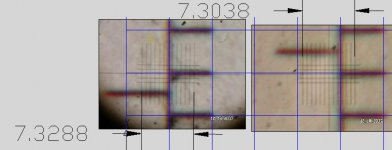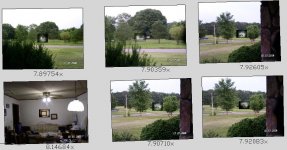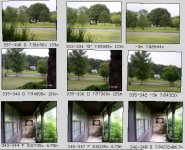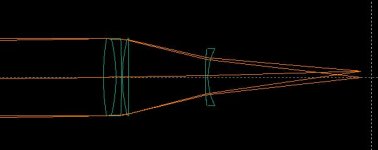henry link
Well-known member
I decided to start a new thread on this subject, which has been under discussion in the thread "First Look at 7x42 EDG" in the Nikon subforum. I hope Surveyor will copy and paste his recent measurements from there.
The main question under discussion has been whether binoculars with internal focusing lenses are able to maintain constant magnification at any distance or show an increase in magnification at close distances like binoculars that adjust focus by varying the distance between the objective and eyepiece. Surveyor and Edz at Cloudy Nights Binocular Forum have measured increases in magnification at close distance for some binoculars using focusing lenses. I've measured other models with constant magnification. I'm hoping somebody will come forward with some knowledge about how these focusing lens systems are designed.
In the meantime here are the results of some magnification measurements I made yesterday comparing two binoculars with focusing lenses (the Zeiss FLs) to six Porros with moving eyepieces. I picked the six Porros for their close focusing ability. First measurement is closest focus for the right barrel of each binocular (combination of close focus setting and maximum positive diopter compensation) and second measurement is 80', the distance limit of my backyard test set-up.
Zeiss 8x42 FL: 7.91x at 77", 7.89x at 80'
Zeiss 8x56 FL: 8.07x at 94", 8.08x at 80'
Nikon 8x30 EII: 8.34x at 77", 8.03x at 80'
Nikon 10x35 EII: 10.49x at 112", 10.10x at 80'
Nikon 8x32 SE: 8.44x at 83", 8.08x at 80'
Zeiss 8x30B (Porro): 8.29x at 107", 8.14x at 80'
Swarovski 8x30 Habicht: 8.33x at 87", 8.06x at 80'
CZJ 8x50 Octarem: 8.37x at 146", 8.14 at 80'
Notice that most of the measurements (except the 8x42 FL) are above specified magnification. Magnification at infinity focus would be a little less than 80' in the Porros, but probably not much, maybe 0.02-0.04x. There are only about 2-3 diopters of focus change between 80' and infinity, but over 20 diopters between 80' and the closest focus. So, for reasons I don't understand I think all my figures are probably a little high, maybe about 0.5%. I don't really expect accuracy much better than 1%.
The main question under discussion has been whether binoculars with internal focusing lenses are able to maintain constant magnification at any distance or show an increase in magnification at close distances like binoculars that adjust focus by varying the distance between the objective and eyepiece. Surveyor and Edz at Cloudy Nights Binocular Forum have measured increases in magnification at close distance for some binoculars using focusing lenses. I've measured other models with constant magnification. I'm hoping somebody will come forward with some knowledge about how these focusing lens systems are designed.
In the meantime here are the results of some magnification measurements I made yesterday comparing two binoculars with focusing lenses (the Zeiss FLs) to six Porros with moving eyepieces. I picked the six Porros for their close focusing ability. First measurement is closest focus for the right barrel of each binocular (combination of close focus setting and maximum positive diopter compensation) and second measurement is 80', the distance limit of my backyard test set-up.
Zeiss 8x42 FL: 7.91x at 77", 7.89x at 80'
Zeiss 8x56 FL: 8.07x at 94", 8.08x at 80'
Nikon 8x30 EII: 8.34x at 77", 8.03x at 80'
Nikon 10x35 EII: 10.49x at 112", 10.10x at 80'
Nikon 8x32 SE: 8.44x at 83", 8.08x at 80'
Zeiss 8x30B (Porro): 8.29x at 107", 8.14x at 80'
Swarovski 8x30 Habicht: 8.33x at 87", 8.06x at 80'
CZJ 8x50 Octarem: 8.37x at 146", 8.14 at 80'
Notice that most of the measurements (except the 8x42 FL) are above specified magnification. Magnification at infinity focus would be a little less than 80' in the Porros, but probably not much, maybe 0.02-0.04x. There are only about 2-3 diopters of focus change between 80' and infinity, but over 20 diopters between 80' and the closest focus. So, for reasons I don't understand I think all my figures are probably a little high, maybe about 0.5%. I don't really expect accuracy much better than 1%.








